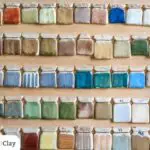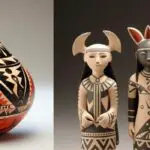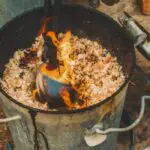The Aztec people created a sprawling empire that cultivated religion, music, and art. Their influences have lasted for many generations. And Aztec pottery is one of their richest traditions.
In this article, we’ll take a look at pottery making in ancient Aztec times and the popular pottery styles that ruled the day.
How did the ancient Aztecs make pottery?
Techniques for making pottery
There’s no evidence that the Aztecs employed a potter’s wheel to make their wares. Instead, pottery was made with handbuilding techniques, most commonly the coil building technique. Aztec artists did have various types of tools that assisted in creating or decorating the works. These tools, though rudimentary, are similar to the ones we use today.
Clay
It is believed that the Aztecs used a mix of clays to create stoneware and earthenware vessels. Clay that is naturally occurring and can be mined from riverbeds or cliffsides is often earthenware. But many of the popular pieces made by the Aztecs used a type of clay that turned white when fired. The white color indicates the use of stoneware clay.
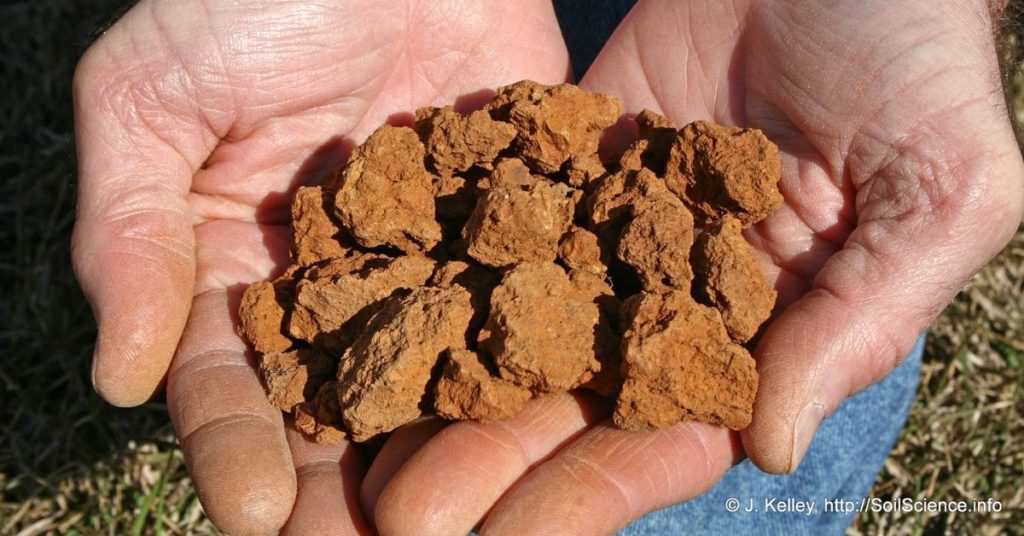
How did the Aztecs fire their pottery?
The Mexica potter would fire their wares through a variety of techniques. Here are the two most common.
1. Pit fires
Pit firing was a common way to fire for ancient cultures. Once fire was discovered, it became an important part of a society’s life. Good news for potters: There was always a fire available to throw some pottery on.
Pit firing was the method in early times for Mexica potters and the in later year’s was still employed by lower-class potter. After a day of working on a piece, the artisan would add the ware to a bonfire turning the greenware into a fired piece. Andy Ward has a great video showing you how you can fire pottery without use of a kiln. Check it out below.
2. Kilns (or a structure specifically made for firing pottery)
There aren’t a ton of ancient kilns that have been discovered by archeologists in the Mexican region. But it is believed that the Aztecs did have kilns. The kiln would be an expensive structure to upkeep. So it was likely that kilns only existed in a production facility and were only used by the highest level potters.
kiln image: https://www.utahsadventurefamily.com/childrens-forest-at-the-kiln/
Open firing (or pit firing) isn’t something a potter has a lot of control over. Kilns on the other hand have the advantage of heat control leading to different kinds of works being produced. A lot of coloring and finishes we now know and love in pottery can attribute their discovery to the invention of a kiln.
What was Aztec pottery commonly used for?
Like all cultures, pottery was primarily utilitarian to start. Aztec vessels carried harvest from the fields and stored food and liquid.
Pottery later became an art form. And like many art forms, the rich and powerful would own the best Aztec pottery displaying their art at dinners and events.
Pottery also played a role in the spiritual lives of the Aztecs. Incense burners and funerary urns had a practical use for rituals. And other ritual vessels had incisions or were painted to display symbols and stories of the Aztec mythos. These would be used during ceremonies.
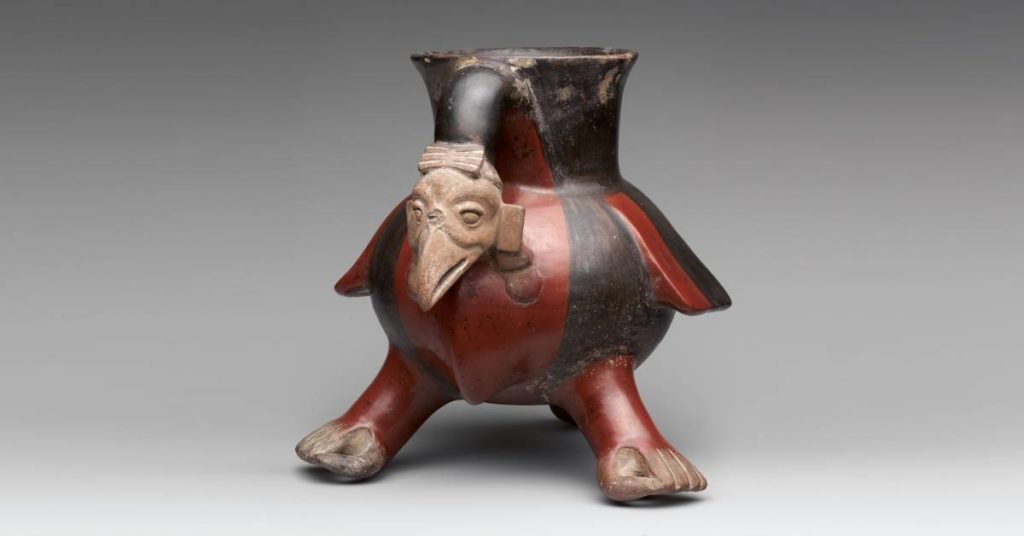
The Aztecs also made musical instruments from clay. Drums, flutes, and other wind instruments have been discovered by archeologists.
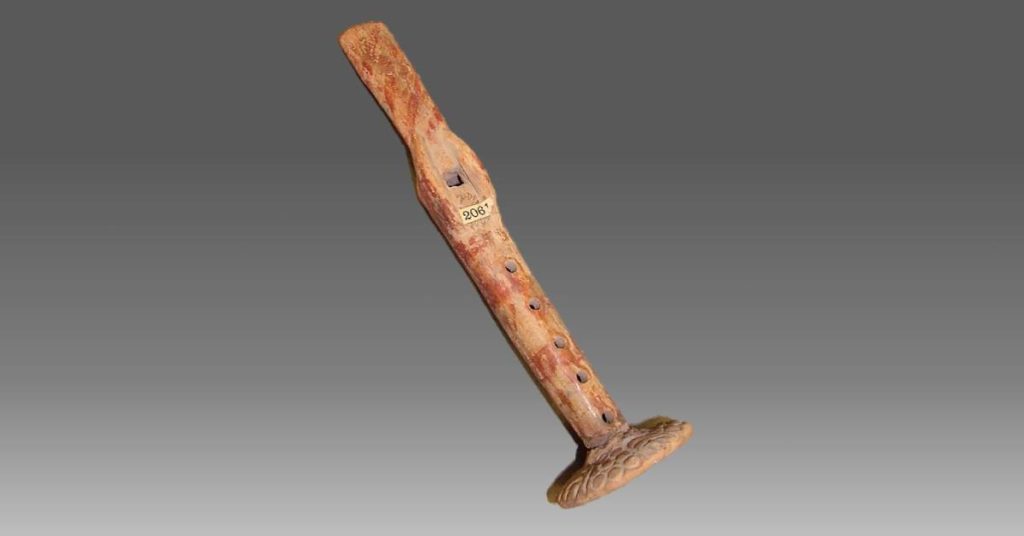
Popular designs and styles
Redwares
Red ware pottery is a categorization of works made from earthenware clay.
The most popular redware style was Cholula pottery which has become synonymous with Aztec design for many. Cholula was a city that created elaborate pottery works with red, brown, and orange designs. The Cholula potters held an important place in Aztec civilization and often rituals would be performed with their polychrome lacquer ceramics.
You can see in the piece below that Cholula vessels often depicted scenes or figures of gods through painted designs on the surface of the pot.
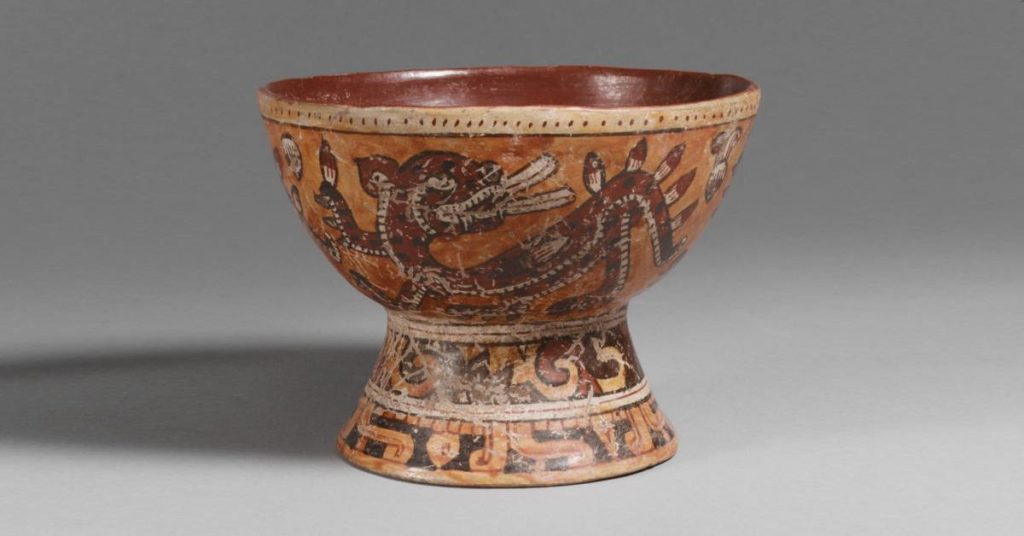
Whitewares
Whiteware pottery describes works made with clay that turns white after firing.
One of the popular styles with whiteware was black-on-white pottery. The potter would use mineral and natural pigments to paint a black finish onto the white clay. After firing, the potter would etch geometric designs, landscapes, or figures into the piece. This etching revealed the white background.
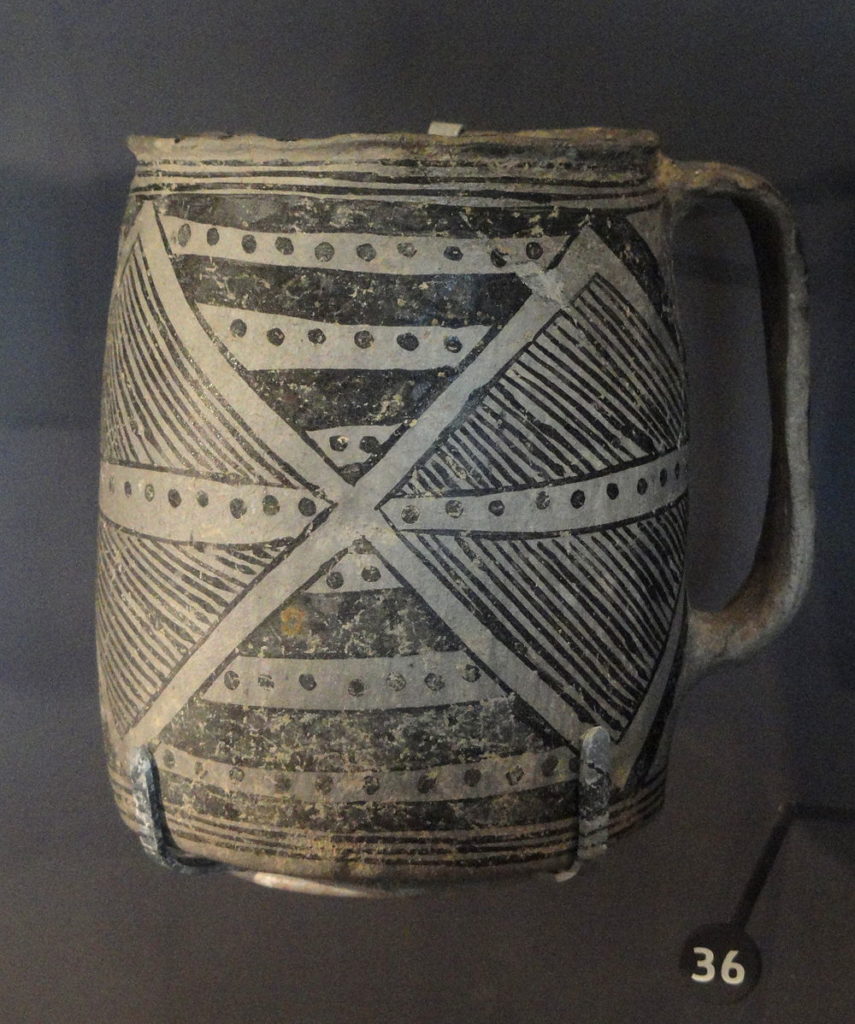
A brief historical and cultural examination of the Aztec people
The first recorded people to settle in modern-day Mexico happened about 1500 years ago. It wasn’t for another 500 years that the Mexica people settled in this area. The Mexica people would go on to build the Aztec empire. It’s still debated where these individuals came from. The Aztec folklore describes a place called Aztlan. Many believe Aztlan was the Southwest United States. Others would argue Aztlan is the western coast or Morden-day California.
After a few failed settlements in the valley of Mexico because of sour neighboring tribes, the Mexica people founded the Aztec capital of Tenochtitlan which would become the crown jewel of the Aztecs.
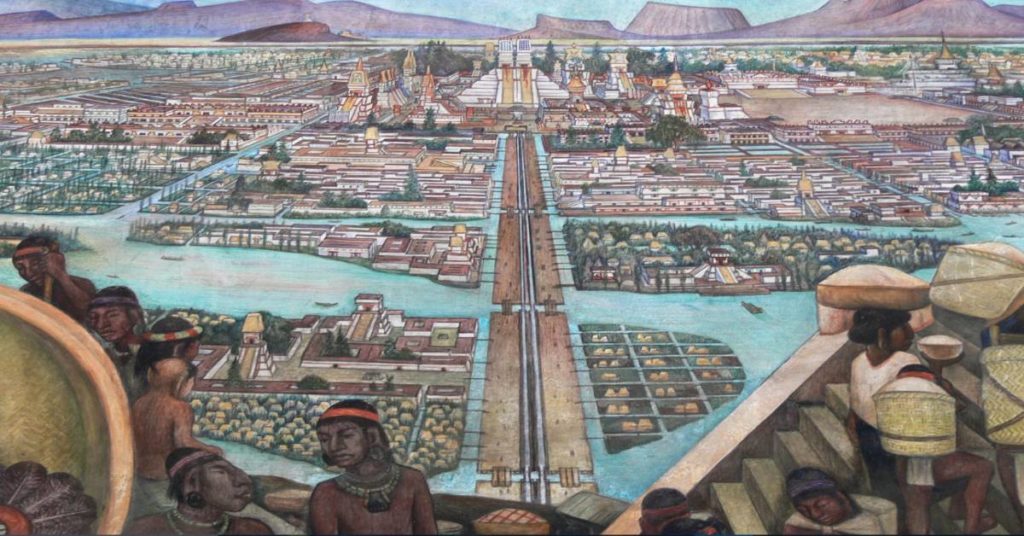
The Mexicas became an agrarian people. Maize was the primary crop. Success in trade and agriculture lent itself to Tenochtitlan flourishing and growing into a powerhouse.
At first, the central Mexico region was made up of a collection of city-states. The Aztec empire unified all the regional city-states through war and treaty under its banner. After conquering much of the area, the Aztecs founded places including the town that would become Mexico City. And the Aztec people had a long reach of influence even beyond conquering and unifying. Evidence of this is archeologists finding ancient pottery in places as far as central Guatemala.
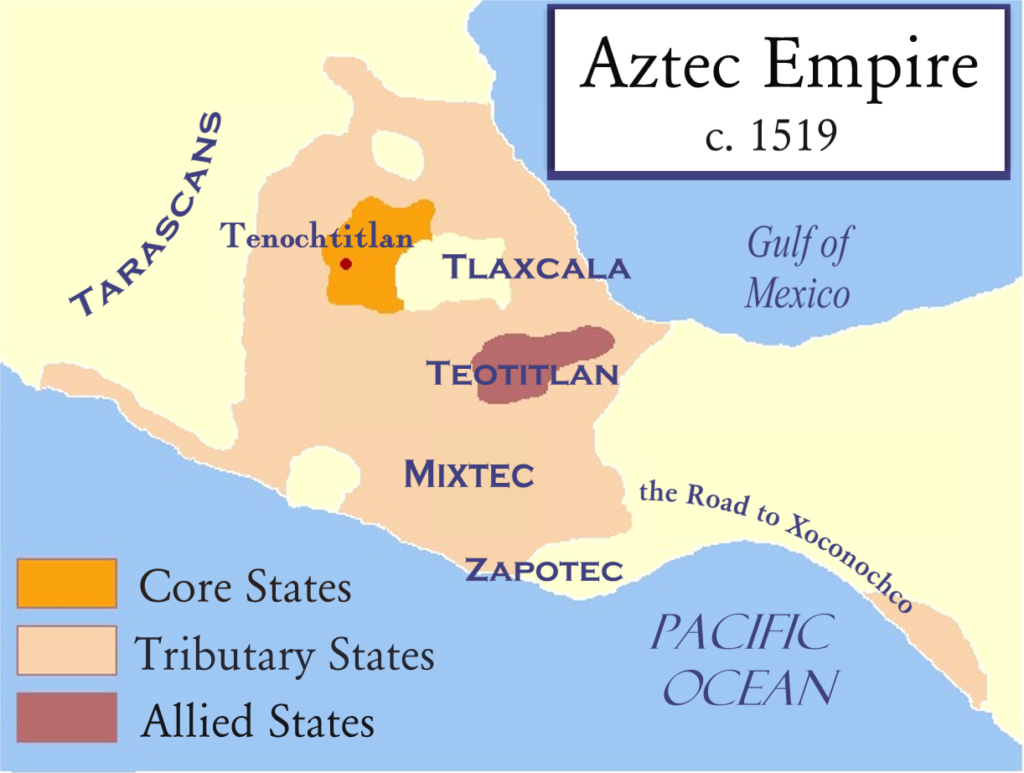
The Aztecs grew into a powerful force. Most of their growth came through conquering neighboring tribes and cities. One of the darker parts of their culture is what they would do to their enemies. Instead of fighting to kill their enemies, the Aztec warrior would instead fight to capture. The captives would become sacrifices in religious rituals. The religious beliefs of the Mexican people were a significant part of the culture. The belief system was a melding of nature, the spiritual, and humans. There were 200+ divine beings in their pantheon. Aztec priests would practice human sacrifice to appease the different deities.
Art with central to the spiritual practices in Aztec culture. The temples they built were decorated with beautiful stone carvings, jewelry was worn by priests and the sacrifices, and pottery was crafted for ritualistic purposes.
Conclusion
The Aztec empire created amazing structures, rich culture, and beautiful art before their downfall after Spanish conquest. The Mexicas and Aztecs deservedly hold a place of high esteem in the eyes of potters and scholars alike. We hope you enjoyed learning about Aztec pottery as much as we did. If you’re still interested in learning about the Aztecs, check out this YouTube video.
If you have any questions or comments, please email us at hello@wheelandclay.com. We’d love to hear from you!
Related articles
Did you enjoy learning about the Aztec empire through the lens of pottery? Good news! We have more articles like this on other cultures. Check them out at the links below.
A guide to ancient Egyptian pottery
A guide to ancient Greek pottery
9 Navajo pottery designs you’ll want to check out
A guide to ancestral Pueblo pottery


